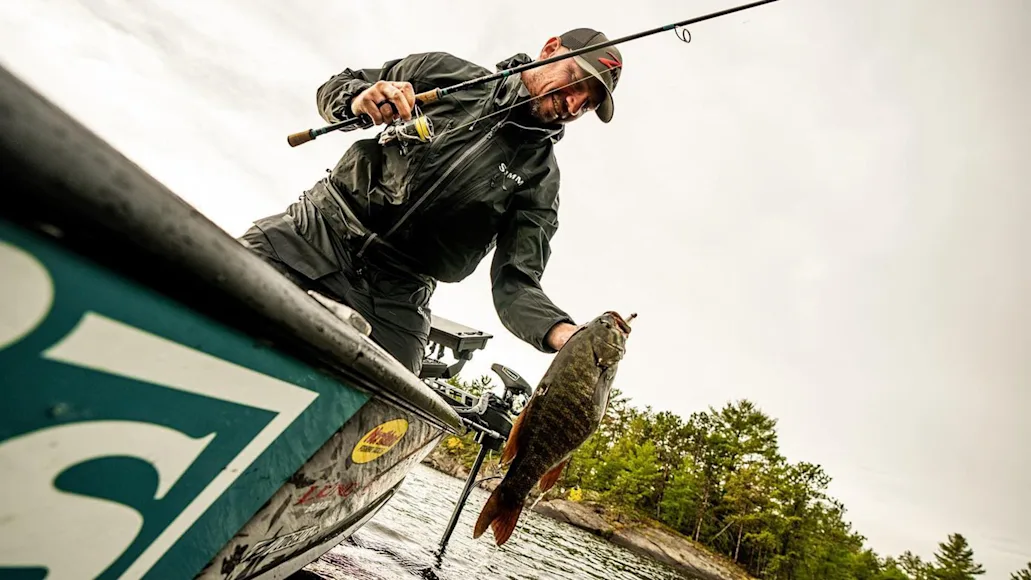With Memorial Day in the rearview and summer break underway, you have a better chance of colliding with a JetSki than a with spawning bass on most lakes and rivers in the U.S. But there’s still a small window of time ahead to catch giant spawning smallmouths and a few lingering largemouths in the northernmost stretches of the U.S. and up into Canada, including on number famed border fisheries where 4- to 6-pound smallies spawn in droves and are eager to chase down a bait and annihilate it. Here, the next full moon on the calendar points to June 21st as the last, best day of the 2024 spawn.
Pro angler Jeff Gustafson of Kenora, Ontario, hails from this summer smallmouth paradise, so we caught up with the 2023 Bassmaster Classic champ to pick his brain on how to make the most of this last stage of the bass spawn.
The Region: All along the northern border of the U.S. and into Canada.

Learn how to get the all-new Field & Stream journal!
The Expert: Bassmaster Classic Champion Jeff Gustafson
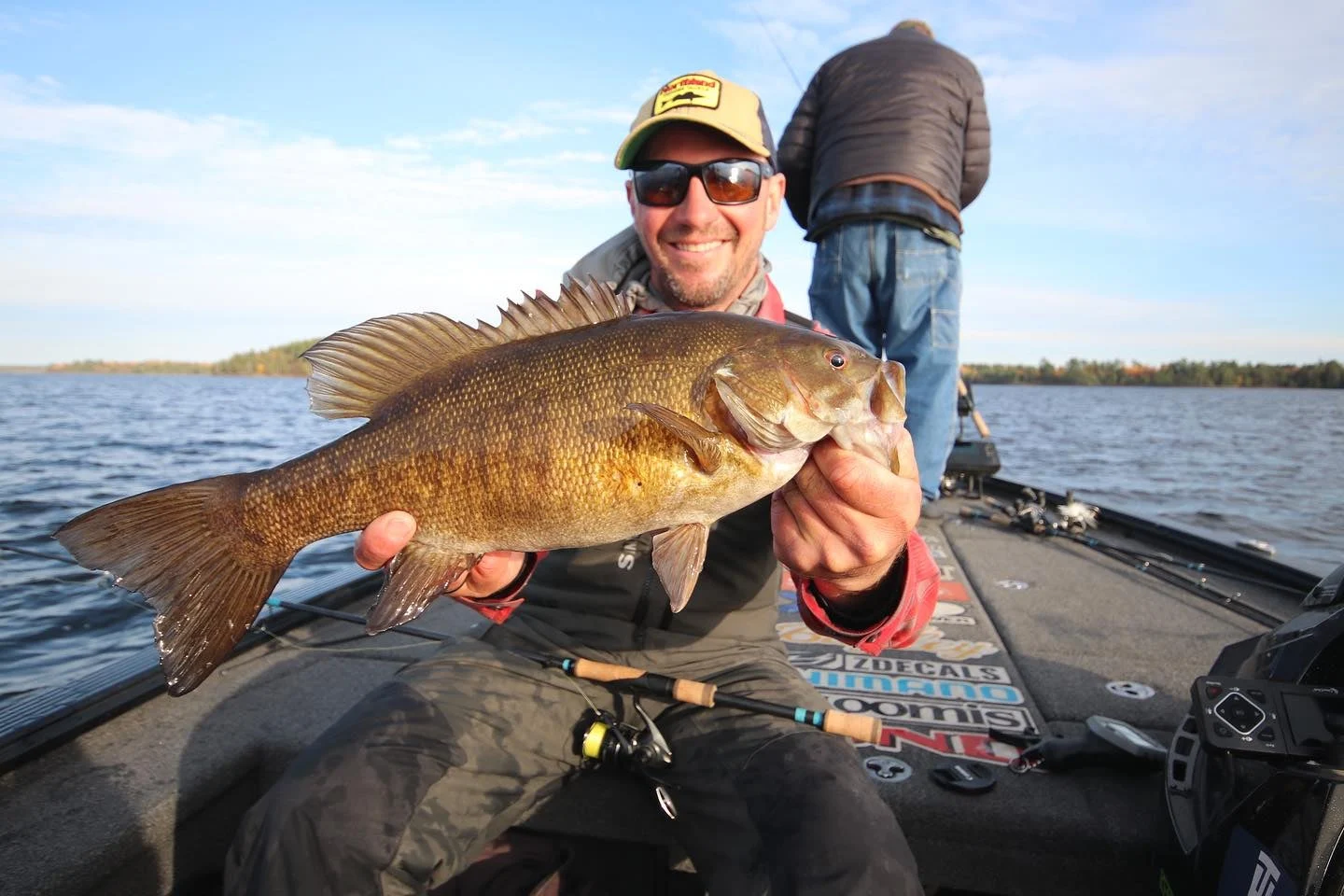
Gustafson with a big North Country smallmouth. Jeff Gustafson
Jeff Gustafson has spent the last decade fishing as a full-time touring bass pro. He is an extremely well-respected smallmouth angler, well versed in the tactics and tools needed for this style of fishing. He’s also proven he can hold his own all across the United States, amassing more than a million dollars in earnings as a touring pro and winning the 2023 Bassmaster Classic on the Tennessee River.
**Related: The Best Smallmouth Bass Lures of 2024
**
Regional Spawning Conditions Around June 21st
“I would say that by June 10 to 15, stuff is going to start happening around here,” Gustafson says. “Some of the big water will extend into July. But prime time—full-blown—is whenever that full moon is in mid-June.” With the closest full moon this year coming a little late, on June 21st, look for the bass to be bursting at the seams to move onto beds at this time—both largemouths and smallmouths.
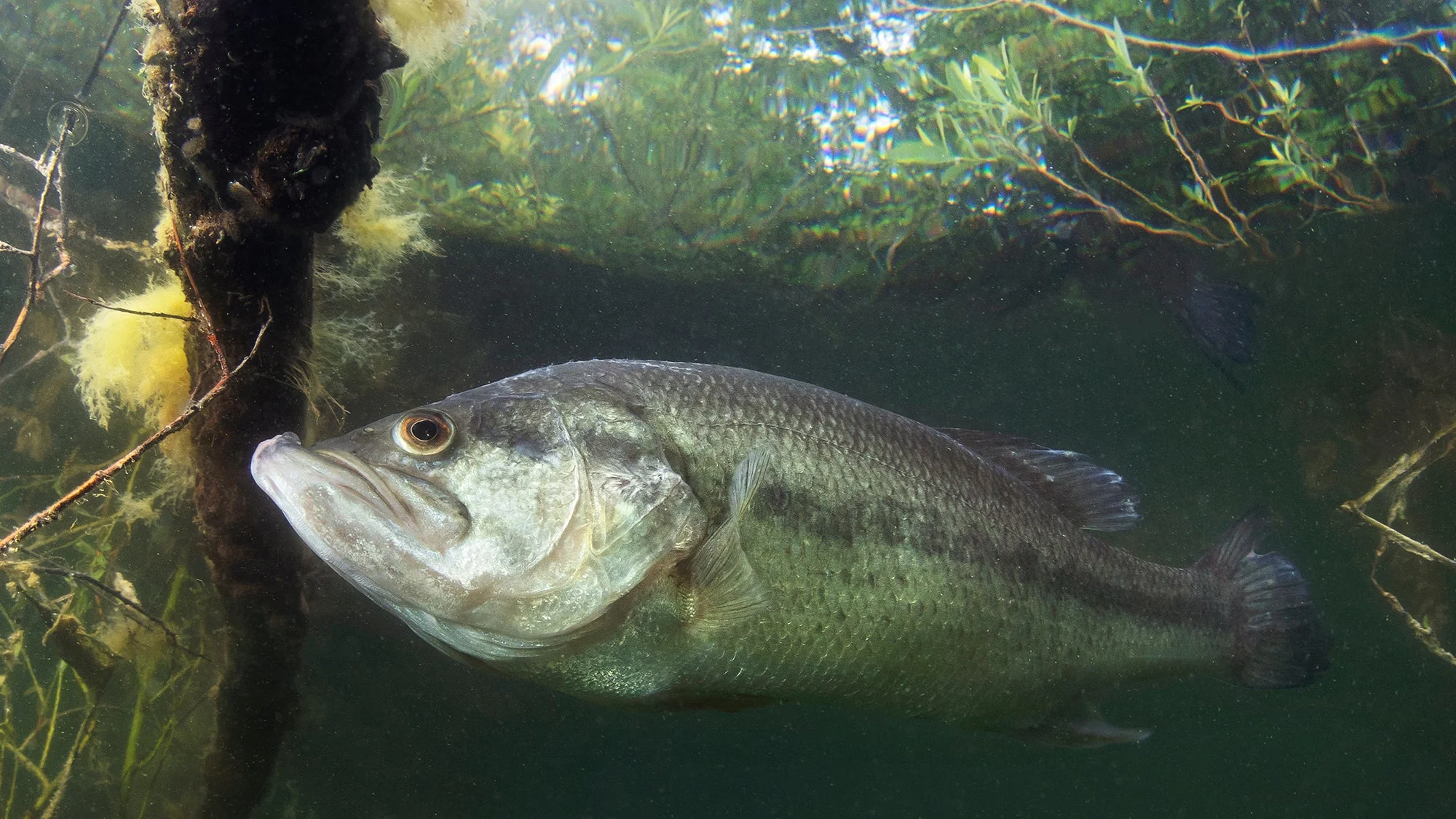
A nice largemouth hovers over a spawning bed. Rostislav / Adobe Stock
“It’s pretty similar between the species. People often think largemouths spawn first, but I think they most likely just show up first because the areas where they spawn are shallower, and they’re tucked away a little bit more. I would be ready to target both species at the same time.”
Gustafson believes the full moon is the biggest key to the spawn up north. But he acknowledges that weather conditions can certainly shake things up. High winds and late cold fronts can slow the spawning process. That said, once water temps start hitting the 60 degree mark near a full moon, get ready. With these conditions, the bass move up in large waves and things can happen in a hurry.
“Whenever the temperature gets right around that moon, that’s when the peak action is going to happen. I’ve been on Sturgeon Bay in Wisconsin and there was nothing. And then at 4 o’clock in the afternoon on a hot day, there’s literally fish on beds for miles.”
Look for spawners in 4 to 10 feet of water on the northern shores of fisheries. Gustafson has found that these areas are the more protected stretches from hard winds, which typically come out of the north/northwest this time of year. They get the most exposure to sunlight throughout the day, too.
Top Baits and Tactics for June 21st
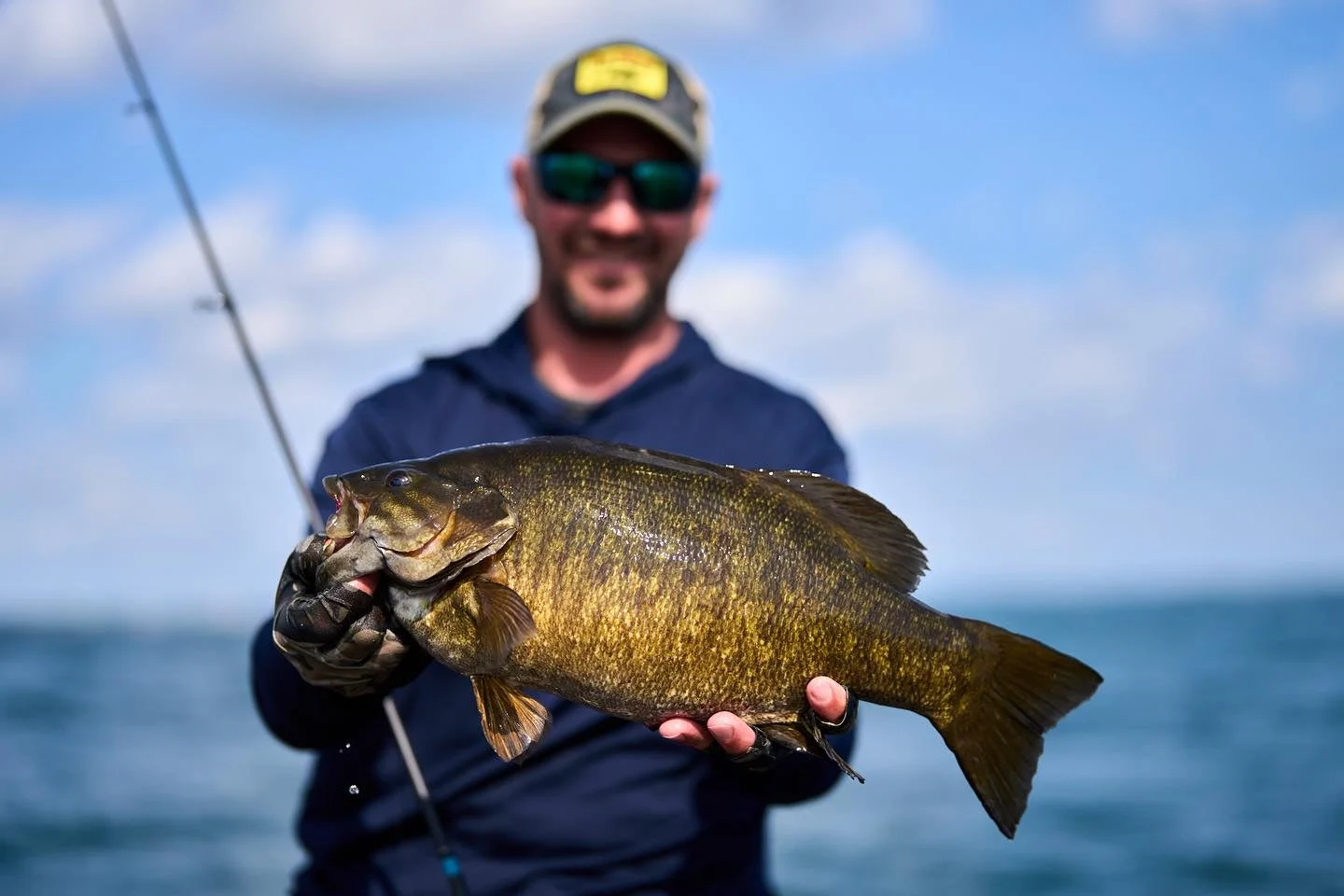
Gustafson shows off another big spawning smallmouth. Jeff Gustafson
When it comes to bait selection, the rare largemouth responds well to standard fare. You can pitch a tube or other bottom bait over and into the bed and typically prod them into biting with ease. The smallmouth bite readily too, but they are far more plentiful than largemouths in this region, so there are all sorts of ways to catch them.
“If it’s a smallmouth (on bed) and it hasn’t been caught yet, you cast pretty much anything you want. Up north where I live, a lot of people come to fish and just want to catch them on topwater. And you can catch them really good on topwater. So that’s kind of fun. But If it were a tournament situation, I’m going with a small tube or a Ned rig
, something they can just slurp up and get hooked pretty good.”
Gustafson mentioned that he’d also have a drop shot rigged up in a tournament situation, but that he’d lean heavily on the Ned rig or tube as long as the bass were willing to bite one of those. The reason for that is because there are lots of fish to be caught in this part of the world, and Gustafson feels more confident horsing fish after fish in with the stronger line and stouter Gamakatsu 604 hook that he uses with a tube or Ned rig, as opposed to his lighter drop-shot setup. “The Gamakatsu 604 is just their heavier-gauge 90-degree hook. It’s a little better quality and is designed for tournament fishing.”
Gustafson recommends a #1 G-Finesse Drop Shot Hook for drop shotting, and he uses 8-pound braid and 8-pound fluorocarbon leader for this technique, moving to 10-pound braid/10-pound fluorocarbon combo for the Ned rig and tube.
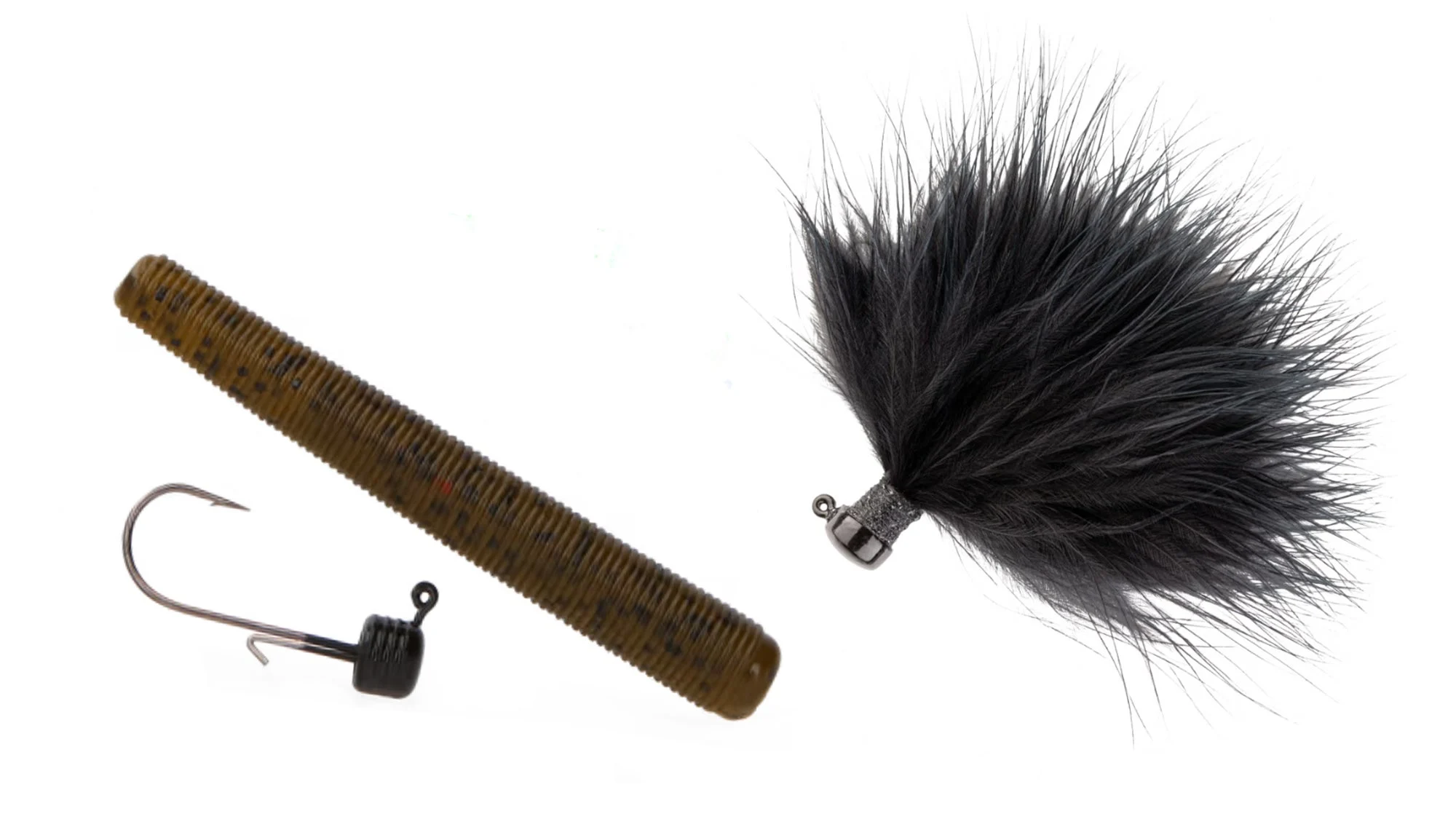
Two of Gustafson’s go-to spawning baits are a Ned rig and a black marabou jig. Bass Pro Shops
“If you want to cover some water and cast, small hair jigs are good too. I use a 3/32-ounce and all I use is black. Northland Tackle has a new Elite Series Marabou hair jig
. It’s the best one you can buy. I’ve made my own since I was a kid, but these are specked out the way I want them.”
Whether you decide to drag a Ned or a tube, pitch a drop shot, cast a hair jig, or work a topwater, there should be no shortage of eager bass. Try the northern shores of the fisheries first. If you’re seeing water temps in the 60s, things are getting right. Expect increased activity as the full moon nears, and things should be wide open by the time June 21st arrives. This looks to be the last, best day of the spawn for 2024. So make the most of it.
**Read Next: The Best 25 Topwater Bass Lures
**

